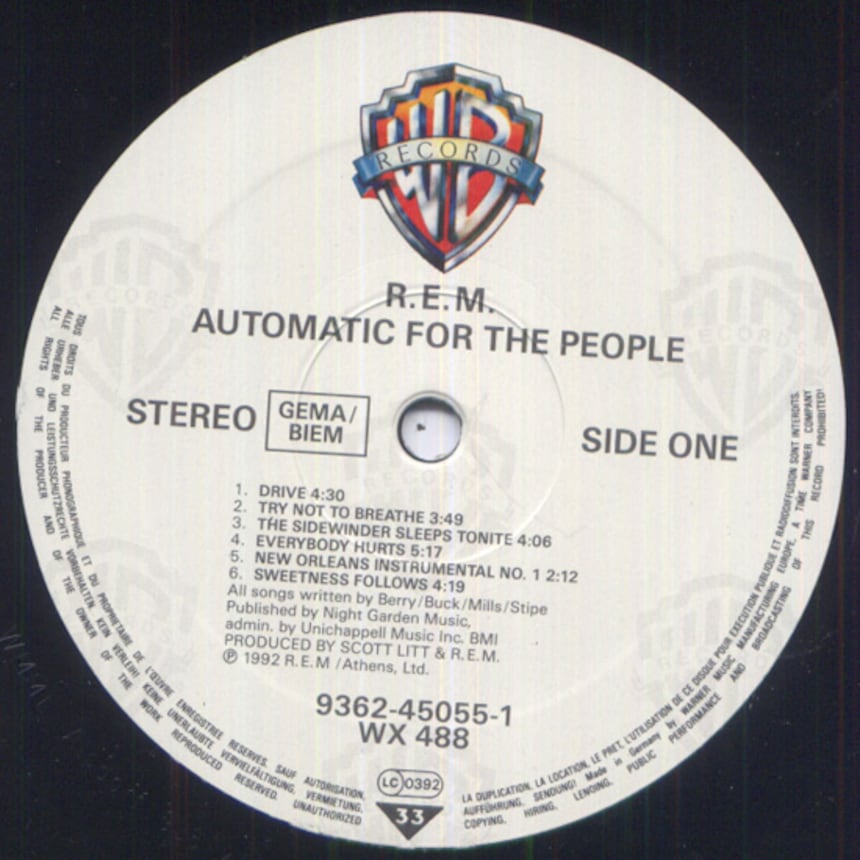Once the Qobuz laboratory has checked that the albums are in high resolution, we then find those, notably the re-editions, which we believe will bring you an added extra when listened to in the 24-bit audio version, when compared to the CD Quality Version. And here we are then, with the famous album from R.E.M.
1992: what a great year. The already powerful and legendary pop-rock-folk group R.E.M. releases their eighth album, an album that will see in no less than six hit singles, a new for the American band formed in 1979 and fronted by Michael Stipe.
Beyond the commercial success of the album, Automatic For The People featured insightful lyrics (youth suicide, comedian Andy Kaufman, etc.) and a musical style that stretched from pop, folk and country through to rock. Thanks to its numerous re-releases on vinyl, CD and remastered CD, it’s an album particularly well known. But its availability now in 24-bit/48 khz is a welcomed one. Drive, the song which opens the album has always been a treat on vinyl and remastered CD. So we were intrigued to test it in “augmented reality technology,” that’s to say, Studio Master edition (24-bit) now available from us.

Our testing procedure at Qobuz is unchanged. We ask our technical certification service to give us a few examples each month that allow us to judge the album’s pedigree during our studious listening sessions. This listening takes place via an Astell&Kern AK120 plus headphones from Philips Fidélio X1, B&O H6, Parrot Zik, etc. We also use a PC during our careful work, which has a Asus Xonar Essence STX sound card. In short, it’s a barrage of technology which allows us to pass beautiful hours listening, comparing and concluding.

A more aerated quality re-discovered with a more detailed sound
Each recording, each mastering or remaster develops a personality of its own. During our listening, our role is principally to find this and then “compare” the CD quality (16-bit) version with that of the version offered in 24-bit. In the case of Automatic For The People, the sampling frequency is increased to 48khz Studio Master.
If the difference in the dynamics between the 16-bit version and the 24-bit version is no more surprising, it is a result of the precision of the audio message. The example of the song Try not to breathe though is amazing. In CD quality, the intro offers a sound that is acute and messy, while the 24-bit version lightens the ensemble: the acuteness of the guitar is no longer stuck together and is much more spacious. The sound difference is instantly noticeable. Listen yourself and you will no doubt come to the same conclusion as us.
The same can be said of the intro guitar and vocals by Michael Stipe on Drive (the drumming that comes in at the beginning also benefits from a much tidier and cleaner sound on the 24-bit version). In truth, it is the high-range which doubles the precision of the Studio Master (in terms of definition). The instruments are tidy and more distinguishable from one another. The magnitude is felt immediately upon the sublime Everybody Hurts. We move from a sound which is pleasant in 16-bit, to one that becomes something else in 24-bit; more accurate, more balanced, “purer” (a word we don’t often use). The beautiful recording then explodes, and Qobuz is conquered; no more, no less.
Automatic For The People by R.E.M. in Studio Master quality therefore keeps its promises in terms of being an offering greater than that which we knew in 16-bit CD quality.